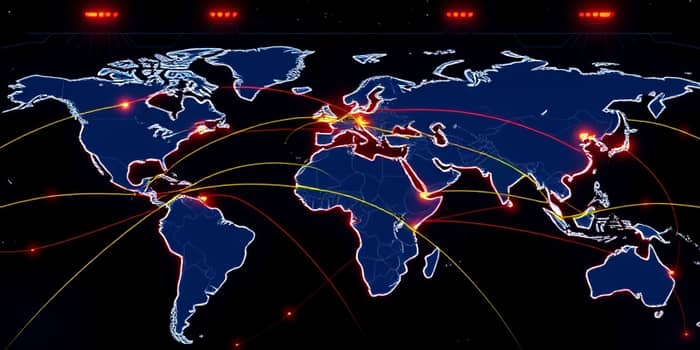The interplay between global politics and financial markets has never been more intense. In 2025, conflicts, trade disputes, and rising protectionism are transforming the investment landscape.
From Eastern Europe to the Middle East, and across the Pacific, geopolitical flashpoints are testing the resilience of economies and investors alike. Understanding these dynamics is essential for navigating uncertainty and seizing new opportunities.
Current Geopolitical Flashpoints
Several major conflicts and tensions are driving elevated risk levels. The protracted Russia-Ukraine war continues to disrupt energy flows, while the Israel-Hamas war is destabilizing key shipping lanes in the Red Sea through Houthi missile attacks. Meanwhile, the US-China rivalry has escalated into proposals for steep tariffs—60% on Chinese imports and up to 20% on goods from the EU, Mexico, Canada, and Vietnam.
Over 64 countries are scheduled for national elections in 2025, adding a further layer of political uncertainty. In such an environment, markets react sharply to each new diplomatic development, diplomatic sanction, or policy shift.
Economic Growth and Inflation Under Pressure
Geopolitical disruptions have a direct bearing on growth and price stability. Supply chain interruptions in energy and agriculture are pushing food and fuel prices higher. While consumer inflation in advanced economies may edge down from pandemic peaks, it is expected to remain above pre-pandemic norms for the foreseeable future.
Asia-Pacific remains the long-term growth engine of the global economy, but structural headwinds—ranging from high borrowing costs to policy uncertainty—are moderating expansion. Advanced economies face the dual challenge of curbing inflation without derailing growth, a balancing act complicated by external shocks.
Trade, Supply Chains, and Protectionism
The era of unfettered globalization is giving way to a more fragmented and contested world. Tightening US tariffs and reciprocal measures from trading partners are triggering a partial rewiring of trade flows as firms relocate production and sourcing to mitigate risk.
Export-dependent economies are particularly vulnerable. Currency realignments may offer some relief, but the abrupt shift in sourcing strategies can impose hefty transitional costs. At the same time, China’s industrial overcapacity continues to flood global markets with cheap goods, benefiting some consumers but threatening local industries in other countries.
Impacts on Financial Markets
Geopolitical shocks are closely linked with market turbulence. On average, global stock markets dip by 1% in months marked by high-risk events. Emerging markets fare worse, with declines up to 5% during intense military conflicts.
Sovereign risk premiums climb following major geopolitical developments: about 30 basis points in advanced economies and roughly 45 basis points—or four times higher—in emerging markets. Bond yields have settled above pre-pandemic levels as investors demand more compensation for uncertainty, driving up borrowing costs for governments and companies alike.
Regional and Sectoral Effects
The European Union faces a unique set of challenges: high energy costs, competition between the US and China, potential tariffs, and fiscal constraints. Growth projections for the region range from 0.8% to 1.6%, underscoring the fragility of the recovery.
In contrast, the Asia-Pacific region continues to exhibit stronger momentum, fueled by robust domestic demand and innovation in technology sectors. However, it too must navigate supply chain realignments and geopolitical competition.
Biotechnology has emerged as a new frontier in geopolitical competition. Fragmentation of biotech value chains is already underway, with nations seeking greater control over critical research and manufacturing capabilities.
Strategies for Businesses and Investors
In response to mounting geopolitical instability, companies and financial institutions are prioritizing operational resilience and risk mitigation strategies. Three key areas of focus include:
- Supply chain diversification: establishing alternative sourcing and multiple logistics routes to reduce single-point failure risks.
- Political risk insurance: transferring some of the exposure to specialized underwriters.
- Scenario planning and stress testing: evaluating business models against a range of conflict and trade-policy outcomes.
Investors are also adjusting portfolios to reflect elevated risk premiums. Allocations to safe-haven assets like high-quality sovereign bonds and gold have increased, even as yields on these instruments remain above historical lows.
Looking Ahead: Navigating a Fragmented Global System
The US dollar retains its status as the primary reserve currency, but mild depreciation risks are emerging amid weakening US growth and narrowing interest rate differentials. Central banks in the US and Western Europe are unlikely to deliver substantial rate cuts in the near term, prolonging high policy rates relative to pre-pandemic levels.
As geopolitical frictions persist, the global financial system is becoming more fragmented. Trade blocs are reconfiguring, and multi-aligned countries must deftly balance relations between the US, EU, China, and other key actors.
For businesses and investors, the path forward demands adaptability, informed decision-making, and a willingness to embrace new models of cooperation. By strengthening resilience, diversifying risk, and staying attuned to geopolitical signals, stakeholders can transform uncertainty into opportunity and thrive in an evolving global marketplace.
References
- https://www.spglobal.com/en/research-insights/market-insights/geopolitical-risk
- https://www.ey.com/en_us/insights/geostrategy/2025-geostrategic-outlook
- https://www.lazard.com/research-insights/top-geopolitical-trends-in-2025/
- https://www.mckinsey.com/mgi/our-research/geopolitics-and-the-geometry-of-global-trade-2025-update
- https://www.blackrock.com/corporate/insights/blackrock-investment-institute/interactive-charts/geopolitical-risk-dashboard
- https://www.shrm.org/enterprise-solutions/insights/top-5-geopolitical-threats-to-businesses-2025
- https://www.economicsobservatory.com/how-are-geopolitical-risks-affecting-the-world-economy
- https://www.imf.org/en/Blogs/Articles/2025/04/14/how-rising-geopolitical-risks-weigh-on-asset-prices










